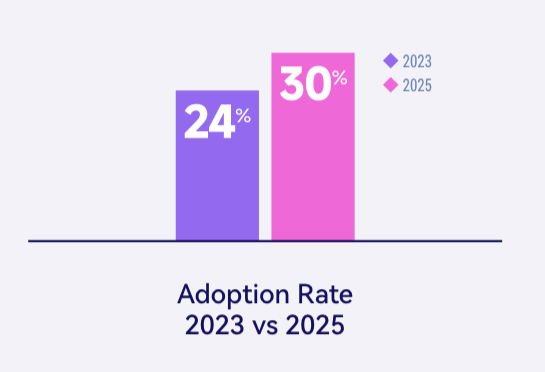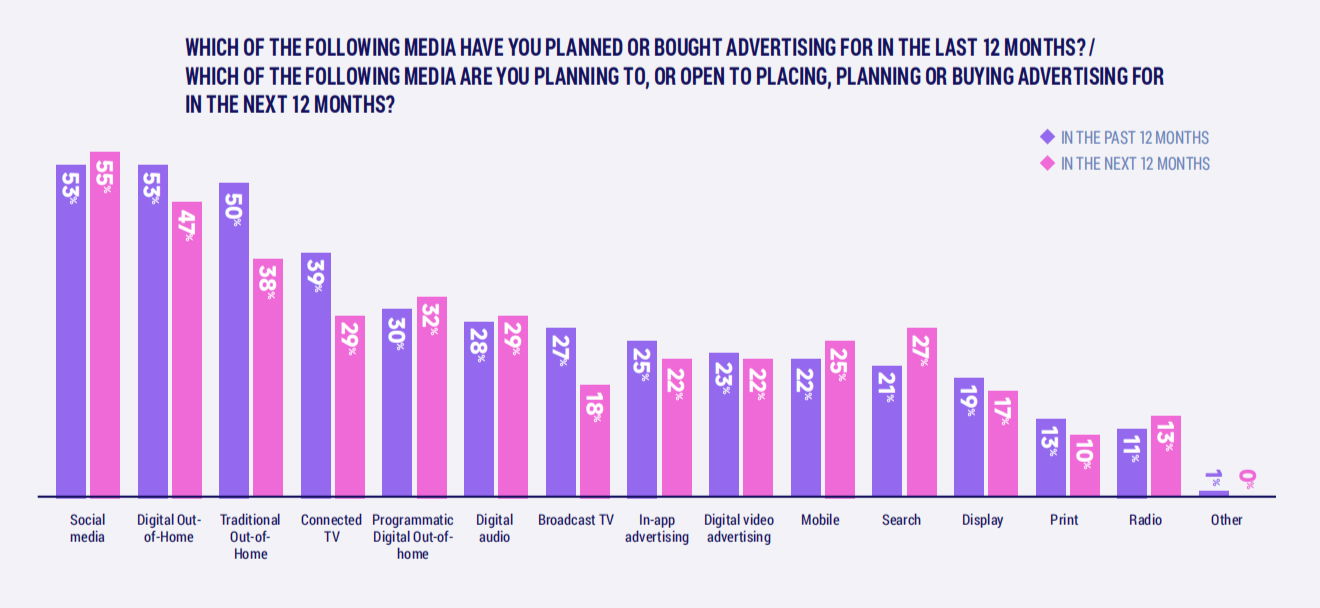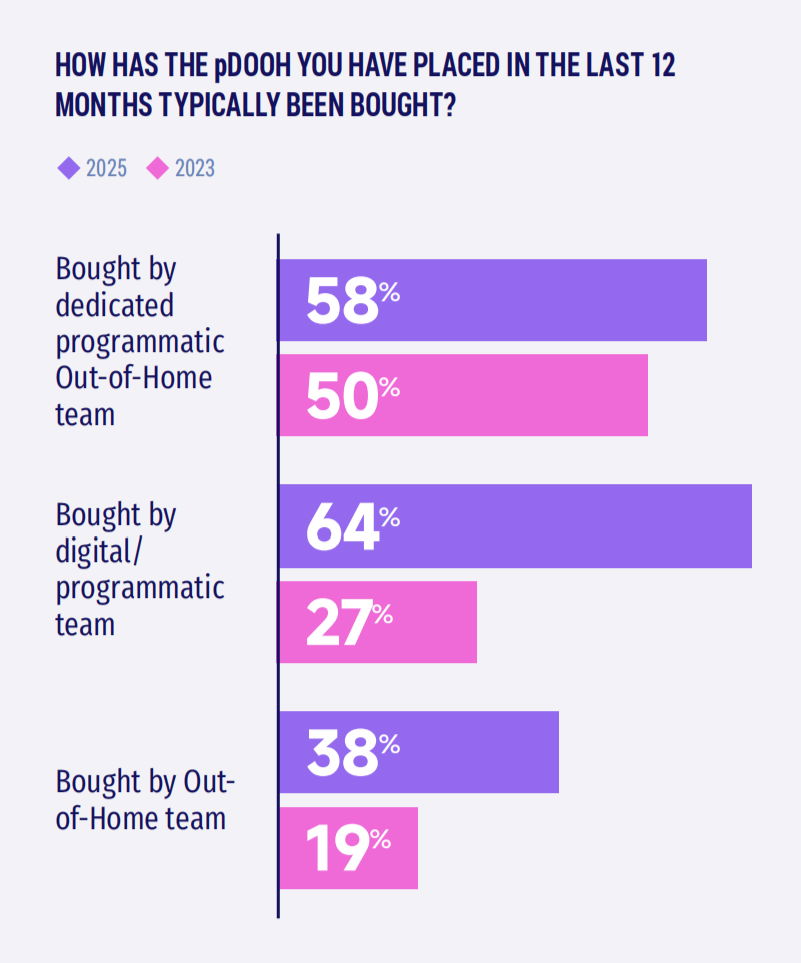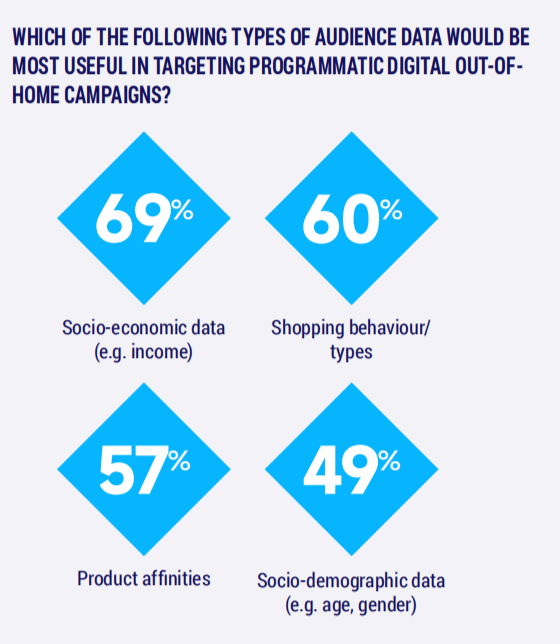



Survey: 42% of advertisers in China plan to allocate budget on pDOOH
share on
More than 30% of advertisers in China are planning to deploy programmatic digital out-of-home (pDOOH) as part of their strategies in the next 12 months, with 42% of them planning to allocate a dedicated advertising budget on pDOOH, a survey finds.
The figure was revealed in "State of the Nation: Programmatic DOOH 2025", conducted by VIOOH in collaboration with Marketing Research Institute. The study surveyed 150 advertisers and agencies in Mainland China via online questionnaires from April to May, covering budget planning, technology adoption, campaign challenges, and other key aspects. In-depth interviews with brand executives and academic experts were also conducted to analyse pDOOH cases and strategic value.
The survey revealed that 30% of the surveyed companies have deployed pDOOH over the past year, and this figure is expected to reach 32% in the coming year, with the continuous rise of the acceptance of pDOOH in the Chinese market.
Compared with the 2023 survey results (24%), the adoption rate of pDOOH in the domestic market has increased significantly. This demonstrates that pDOOH's growing adoption in China is catching up with global key markets.

Notably, while 24% of Chinese advertisers currently use pDOOH, the adoption rate among media agencies reaches 36%. This may stem from advertisers' "lack of understanding of pDOOH capabilities and technology" (53%).
In 2025, 42% of respondents plan to allocate a dedicated advertising budget for pDOOH, marking a significant increase from 33% two years prior. At the same time, marketers are also accustomed to transferring budgets from other digital channels (58%) or other traditional channels (59%) to pDOOH.
Meanwhile, 64% of Chinese advertisers purchased pDOOH via digital or programmatic team, while 58% bought pDOOH through dedicated programmatic out-of-home team. Meanwhile, 38% bought pDOOH through out-of-home team. This marks a significant shift from the 2023 result, when only 27% purchased pDOOH through digital or programmatic team.
In the upcoming year, pDOOH is expected to rank fourth among 14 major media channels for planned investments, with a 32% share. This marks an improvement from its sixth-place ranking two years ago. This increase signifies a growing acceptance of pDOOH in the Chinese advertising market. As pDOOH continues to develop steadily in China, the industry may transition into a more sophisticated deployment phase that focuses on achieving tangible advertising effects and return on investment.
Another intriguing trend is that while social media ads remain China’s long-standing champion, three OOH formats now dominate the second to fourth spots in 2025 plans. This ranking shift substantiates two critical market developments: first, online advertising channels are approaching penetration limits with intensifying competition, prompting advertisers to explore offline alternatives; second, the resurgence of offline media will undoubtedly become a tailwind for pDOOH’s future growth.

Additionally, pDOOH has evolved into one of the regular marketing channels in the omni-channel marketing strategy rather than a "supplementary medium". According to the survey, advertisers generally prefer pairing pDOOH with the following top four media: social media ads, digital audio, mobile ads, and CTV, demonstrating the high integration and strategic synergy of pDOOH with online media.

Despite the industry’s upward trajectory, pDOOH in Mainland China still faces certain challenges. Obstacles preventing advertisers and agencies from adopting pDOOH advertising include “lack of understanding of the role programmatic DOOH should play in a campaign” (49%), “concerns around the availability or accuracy of audience data available for pDOOH" (49%), "Fewer deal options available for pDOOH" (36%), “limited amount of pDOOH inventory in my market” (35%), and “lack of infrastructure for integrating pDOOH with other channels on our plan” (33%).
Looking ahead, nearly 70% of respondents agree they will integrate digital out-of-home more closely into multi-channel campaigns and make greater use of data to plan pDOOH campaigns.
Among marketers who have invested in pDOOH over the past year, only about 30% of respondents deployed it as a standalone advertising channel. In contrast, a larger portion of respondents (64%) prefer to integrate it into their overall digital channel strategy. About 42% include it in omni-channel campaigns (such as radio, online TV).
When it comes to the core metrics shaping investment decisions, 58% of respondents expressed a desire for more options regarding campaign precision and targeting in the market. Meanwhile, 55% prioritised more tangible metrics to demonstrate the channel’s value, 43% wanted additional audience data, and 37% wanted more behavioural, visitation, and mobility data.
Additionally, 43% of respondents considered "audience data" highly valuable. The three most sought-after types of audience data were: "Socio-economic data" (69%), "shopping behaviour/types" (60%) and "product affinities" (57%).

The emergence of dynamic creative optimisation (DCO) technology may become a fuel for the further growth of pDOOH in the domestic market. Among the respondents who placed pDOOH ads in 2024, 42% said they would consider using DCO in the future.
For brands yet to adopt DCO, 52% said their main barrier is budgetary constraints for implementing DCO campaigns while 48% cite the lack of awareness and understanding of DCO capabilities as their primary concern.
Respondents who have not yet integrated DCO technology pay more attention to "relevance at scale" (52%) and "message sequencing" (52%). This shows that marketers are more concerned about whether DCO can quickly and efficiently produce creative content suitable for different times, places, and audiences in high-frequency exposure scenarios.
At the same time, "improved relevance" (48%) and "localisation and geo-targeting" (48%) are also viewed as important benefits. This preference indicates that advertisers' expectations for DCO have evolved beyond mere creative tactics; they are seeking precise ad matching and enhanced delivery efficiency through DCO.
Wang Shui, dean of school of culture and communication at Capital University of Economics and Business said: “As consumers grow weary of online ad clichés, personalised, heartwarming, and playful pDOOH campaigns - amplified through online-offline synergy - are showcasing unique vitality.”
Terry Lin, senior media director, McDonald’s China said: “pDOOH combines the broad reach of traditional OOH with the precision targeting of digital ads, theoretically achieving accurate matching of audience, content, and context. Over the past two years, brands in automotive, Internet, and FMCG have notably shifted OOH budgets to pDOOH.”
Take your brand to new heights with cutting-edge AI strategies, innovative technology, and data-powered experiences. Don’t miss Digital Marketing Asia 2025 in Hong Kong on 20-21 October, where 200+ marketing leaders will explore game-changing trends, proven successes, and bold ideas shaping the future.
Related articles:
Survey: One-fourth of restaurants in HK expect revenue increase with latest travel arrangements
Survey: 75% of HK consumers shop on social media, make 7 monthly purchases
Survey: Over 33% of HKers expect increase in discretionary spending ahead of Christmas
share on
Free newsletter
Get the daily lowdown on Asia's top marketing stories.
We break down the big and messy topics of the day so you're updated on the most important developments in Asia's marketing development – for free.
subscribe now open in new window
